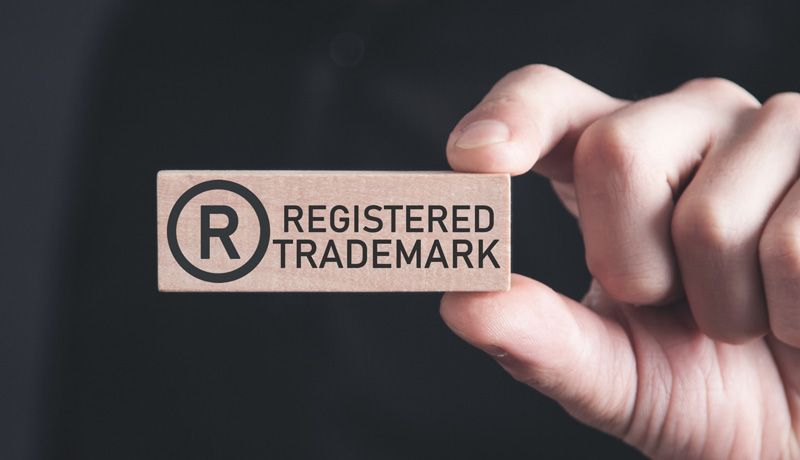Trademark registration is a legal process that gives individuals and organizations exclusive rights to use a particular name, logo, symbol, or phrase in connection with specific goods or services. The purpose is to protect intellectual property and distinguish brands from competitors in the marketplace. This system exists so that consumers can easily identify the source of a product or service while ensuring businesses safeguard their identity against misuse or imitation.
A trademark is not just a formality—it is an asset that can define a brand’s identity for decades. Registration helps transform ideas, creativity, and recognition into legally protected property that has value, enforceability, and credibility.

Why trademark registration matters today
In the digital and global economy, brand recognition is more important than ever. Companies, creators, and entrepreneurs increasingly rely on distinctive marks to stand out in crowded markets. Trademark registration plays a vital role in this environment for several reasons:
-
Brand protection: It prevents competitors from using confusingly similar logos, phrases, or names.
-
Consumer trust: Registered marks help customers identify authentic products or services.
-
Global expansion: A registered mark can be extended internationally, aiding cross-border trade.
-
Legal security: Owners gain stronger grounds for legal action in cases of infringement.
-
Long-term value: Trademarks often become valuable intangible assets that can be licensed or transferred.
This matters not just for large corporations but also for small businesses, startups, designers, and even digital creators. In an era where online platforms and e-commerce have accelerated global competition, safeguarding identity through trademark registration is no longer optional but essential.
Recent updates and emerging trends
Trademark systems are continuously evolving to reflect new challenges such as digital platforms, artificial intelligence, and global trade. Several developments have been observed in the past year:
-
Artificial intelligence in examination (2024): Some intellectual property offices, such as the European Union Intellectual Property Office (EUIPO), have begun testing AI-driven tools to help evaluate applications for potential conflicts.
-
Growth in digital filings: According to the World Intellectual Property Organization (WIPO), global trademark applications crossed 13 million in 2023, showing an increasing reliance on online systems.
-
Domain name disputes (2023–2024): With the rise of web-based commerce, conflicts between domain names and registered marks have grown, leading to an increase in arbitration cases.
-
Green and sustainability trademarks (2024): An increasing number of businesses are filing trademarks related to eco-friendly goods and services, reflecting consumer demand for sustainable practices.
These updates illustrate how trademark registration is adapting to technological, environmental, and commercial realities.
The legal framework of trademark registration
Trademark registration is governed by national laws, international treaties, and regional systems. The rules vary by jurisdiction but often share common principles.
Key laws and treaties influencing trademark protection:
| Region / Level | Governing Law or Treaty | Key Features |
|---|---|---|
| United States | Lanham Act (1946) | Defines registration, infringement, and enforcement rules |
| European Union | EU Trademark Regulation | Provides unified protection across all EU member states |
| International | Madrid Protocol (1989) | Allows trademark protection in multiple countries through a single application |
| India | Trade Marks Act (1999) | Covers registration, opposition, and enforcement in the Indian market |
| Global | World Intellectual Property Organization (WIPO) | Coordinates international filing and dispute resolution |
In most jurisdictions, applications are reviewed by a government intellectual property office. They must meet requirements such as distinctiveness, non-descriptiveness, and lack of conflict with existing marks. Once registered, a trademark can typically be renewed indefinitely, provided it continues to be used and renewed within prescribed timelines.
Useful tools and resources for trademark registration
Several tools and platforms can make the process of understanding and managing trademarks more accessible. These resources are widely used by individuals, businesses, and researchers:
-
WIPO Global Brand Database – Free international search tool for checking existing trademarks across jurisdictions.
-
USPTO Trademark Electronic Search System (TESS) – Database for searching registered marks in the United States.
-
EUIPO eSearch Plus – Official tool for researching trademarks registered in the European Union.
-
TMview – A multilingual database covering participating trademark offices worldwide.
-
National IP Office websites – Each country’s intellectual property office provides guidelines, FAQs, and filing portals.
-
Trademark classification guides (Nice Classification) – International system that categorizes goods and services into 45 classes for streamlined filing.
Using these tools helps applicants reduce the likelihood of conflicts and ensures better preparation before submitting applications.
Frequently asked questions
What is the difference between a trademark and a copyright?
A trademark protects brand identifiers like names, logos, or slogans, while copyright protects original creative works such as books, music, or software.
How long does a trademark last?
In most countries, trademarks last for 10 years from the date of registration and can be renewed indefinitely as long as the mark is in use.
Do I need to register my trademark to get protection?
Some jurisdictions recognize unregistered trademarks under common law rights, but registration provides stronger, clearer, and enforceable legal protection.
Can I register a trademark internationally?
There is no single “global trademark,” but the Madrid Protocol allows applicants to file in multiple member countries through a single application.
What cannot be trademarked?
Generic terms, descriptive phrases without distinctiveness, government symbols, and misleading or offensive content typically cannot be registered.
Final thoughts
Trademark registration is more than a legal process; it is a safeguard for identity, trust, and value in the modern economy. As markets become increasingly global and digital, the ability to distinguish one’s brand is essential for survival and growth.
Understanding the basics of trademark systems, keeping track of recent updates, and using available resources can make navigating the complexities more manageable. Whether for a multinational corporation, a small startup, or an independent creator, trademarks remain a cornerstone of intellectual property rights that ensure innovation and identity are protected for years to come.